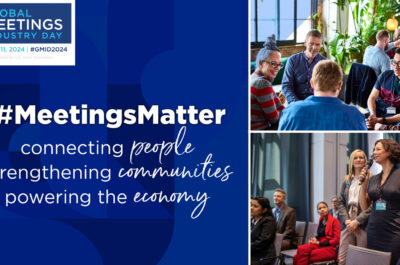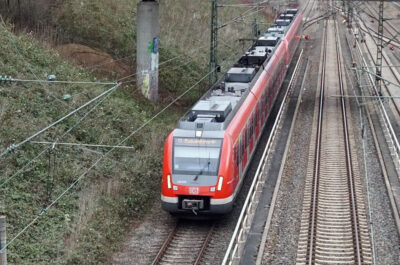The jointly released study, A New Partnership: Rail Transit and Convention Growth, shows that higher revenue per room translates to a potential $313 million in revenue per year for "rail cities" – cities which have direct rail access to airport terminals. In the post-recession period, rail cities commanded 16 percent higher revenue per room than hotels in non-rail cities.
WASHINGTON – Several American cities have a secret weapon to attract business travelers and lucrative meetings and conventions – a rail line to the airport terminal. According to a study released by the American Public Transportation Association (APTA) and the U.S. Travel Association, hotels in cities with direct rail access from downtown to airport terminals receive nearly 11 percent more revenue per room than hotels in cities without a rail airport connection.
APTA President and CEO Michael Melaniphy said, “Clearly investment in local rail systems not only benefits residents, but drives significant economic growth in the travel and hospitality industries. For our nation’s great cities to be more competitive and command higher hotel room rates, we must seize the opportunity to invest in our local rail systems and interconnect these high-demand airports to our American cities’ world-class amenities.”
The jointly released study, A New Partnership: Rail Transit and Convention Growth, shows that higher revenue per room translates to a potential $313 million in revenue per year for “rail cities” – cities which have direct rail access to airport terminals. In the post-recession period, rail cities commanded 16 percent higher revenue per room than hotels in non-rail cities.
“Our nation’s downtowns have lots to offer travelers, and rail connections allow travelers to have greater choice and flexibility in how they experience a region’s amenities,” said U.S. Travel Association President and CEO Roger Dow. “The availability of rail access to airport terminals can actually strengthen the attractiveness of destinations overall as well the performance of hotel properties near rail stations – particularly when it comes to welcoming meeting and convention attendees.”
According to the study, hotel properties located within ? mile of a rail station performed even better than those outside of that radius. These hotel properties averaged a nearly 50 percent higher (48.6 percent) daily room rate and a 12.5 percent higher occupancy rate.
“Rail cities” represented in the report include Atlanta, Chicago, Washington, D.C., Minneapolis, Portland, and San Francisco – all of which have major multimodal transportation infrastructure options for both residents and travelers. These six “rail cities” were compared to hotel performance in popular convention cities that lacked a direct rail connection to the airport terminal: Las Vegas, New Orleans, Orlando, and Sacramento and Tampa.
The difference in performance between hotels in “rail cities” and those without rail public transportation was also apparent with the luxury and upscale hotel properties, which are frequently preferred by business travelers and convention attendees. Luxury hotels can command a 12.4 percent higher average daily room rate as compared to a non-rail city, and also boast a 5.7 percent higher occupancy rate.
Business meetings and conventions are not limited to American attendees. In fact, international travelers accounted for 14.6 percent of total business travel spending in 2012, which generated nearly $38 billion, supported 332,000 American jobs and generated $5.7 billion in tax revenue, according to the study. Intermodal infrastructure that provides direct public transit service from airports to cities provides a competitive edge in winning global business meetings, conventions and events, according the study.
“Looking forward, it is essential that America add balance to our overall intercity passenger travel options,” said Melaniphy. “Highway and airports alone will not have the capacity or the dexterity to serve the growing travel markets of the future. Development of higher-performing intercity passenger rail corridors will be critical to America’s future. There already are success stories all over the world. International visitors know how to use these systems. Destinations become stronger. Travel and tourism become still more robust.”
“It is important that we continue to invest in public transportation options to make our cities attractive business destinations – both for domestic and global travelers,” said Dow. “The benefits of rail continue down the line, with increased hotel, restaurant, business and tourism revenue that help support our entire economy.”
The American Public Transportation Association (APTA) is a nonprofit international association of 1,500 public and private sector organizations, engaged in the areas of bus, paratransit, light rail, commuter rail, subways, waterborne services, and intercity and high-speed passenger rail. This includes: transit systems; planning, design, construction, and finance firms; product and service providers; academic institutions; transit associations and state departments of transportation. APTA is the only association in North America that represents all modes of public transportation. APTA members serve the public interest by providing safe, efficient and economical transit services and products More than 90 percent of the people using public transportation in the United States and Canada ride APTA member systems.
The U.S. Travel Association is the national, non-profit organization representing all components of the travel industry that generates $2.0 trillion in economic output and supports 14.6 million jobs. U.S. Travel’s mission is to increase travel to and within the United States.
A NEW PARTNERSHIP: RAIL TRANSIT AND CONVENTION GROWTH
Vicky is the co-founder of TravelDailyNews Media Network where she is the Editor-in Chief. She is also responsible for the daily operation and the financial policy. She holds a Bachelor's degree in Tourism Business Administration from the Technical University of Athens and a Master in Business Administration (MBA) from the University of Wales.
She has many years of both academic and industrial experience within the travel industry. She has written/edited numerous articles in various tourism magazines.





































































































































